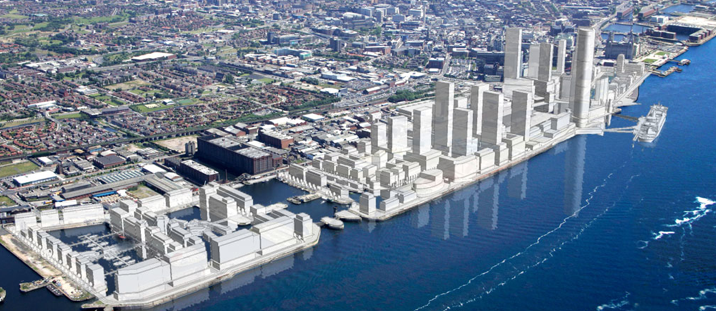Liverpool Waters developer Peel has submitted a revised plan to transform the city’s historic northern docks, more than a decade on from original approval.
Its new vision for Liverpool Waters creates a more open and community-centred place to live, work and visit while retaining much of the original scale.
It comes as Liverpool City Council prepares to receive a £55m investment boost from Homes England to accelerate the regeneration of the key Central Docks, the largest neighbourhood within Liverpool Waters and the city’s largest brownfield site.
The new plan includes a more diverse and affordable housing offer, and will put sustainability, community, and accessibility at its heart.
The Central Docks scheme includes the establishment of a public park and vital infrastructure to accommodate 2,350 new homes.
With full planning approval for the site preparation work, the comprehensive plans for Central Docks include the creation of an interconnected network of public spaces.
Funding for central park site comes after Rachel Reeves referenced the scheme in her first speech as Chancellor setting out the new Government’s commitment to unlock stalled housing schemes
The proposed new landscape will be enriched with the planting of hundreds of trees, with the centrepiece being ‘Central Park,’ a sprawling 2.1-hectare oasis, set to become one of the city’s largest urban green spaces.
Central Docks will become the largest of the five planned neighbourhoods in Liverpool Waters and will directly enable the delivery of thousands of new homes, alongside commercial, retail, leisure and community developments over the next ten years.
The ambitious 30-year regeneration project covers a 60-hectare site, stretching north from Princes Dock, through Central Docks and Clarence Docks, and up to the city’s Northern Docks.
Chris Capes, development director for Liverpool Waters, said: “We haven’t compromised on the scale and ambition of this project but we have reflected on what is most important for the future of this historic site, both as an international tourist destination and for the communities who want to live and work here every day.
“Central Docks alone will deliver thousands of new homes, alongside commercial, retail, leisure and community infrastructure and public spaces over the next ten years.”


